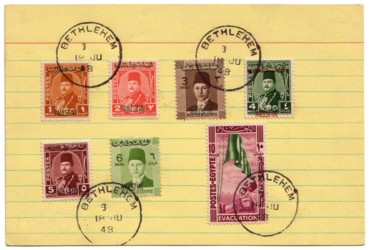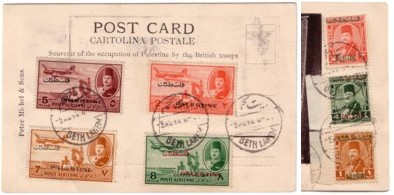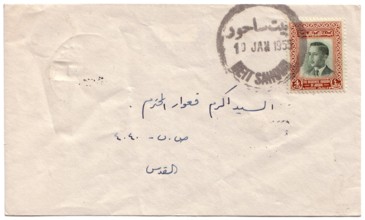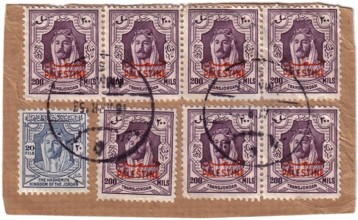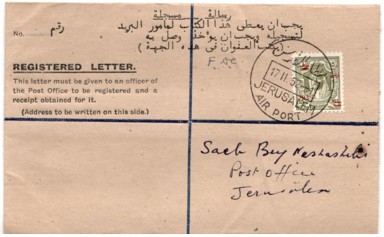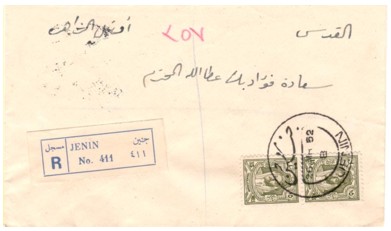The Postal Situation (1948-1967) | |||||||||||||||||
|
The administration of the British Mandate closed virtually all postal facilities during April 1948: rural postal agencies stopped providing services by 15.04.1948 and all other post offices closed by 30.04.1948. Only the four head post offices at Haifa, Tel Aviv, Jaffa, and Jerusalem remained open (with reduced services) until 5.05.1948.
The provision of postal services during the 1948 war develops separately:
Postal services in the North and East rely to a large extent on the still existing structure of the Mandate administration. An order by the Transjordanian army, issued on 24.05.1948, recalls all officials to resume their duty.
After the armistice only ten post offices work under Transjordanian control: Jerusalem, Jericho, Ramallah, Nablus, Tulkarm, Jenin, Qalqilya,
as well as three offices taken over from the withdrawing Egyptian troops, namely Hebron, Bethlehem, and Beit Jala. The offices in Majadal, Isdud, Faluja und Beersheba had fallen under Israeli control.
Transjordan issues special stamps on 2.12.1948: two series of postage stamps (overprinted Transjordanian stamps), as well as postage due and obligatory tax stamps. The stamps are sold until May 1950, and from 24.05.1950 Jordanian stamps came into use. The overprints could be used up.
During the 1950s and 1960s the Jordanian postal organisation is extended considerably.
In addition to the existing head post offices several new offices are established as well as more than 200, mainly rural, agencies open. Even the small rural agencies offer the entire spectrum of postal services.
At the start of the 1967 war the population on the West Bank can rely on over 260 fully-capable postal facilities: List of Post Offices (Westbank).
With the occupation by Israeli troops in June 1967 postal services are interrupted. From July 1967 the Israeli occupation forces establish a postal organisation consisting of eight post offices.
Some of the other offices are later reopened, though postal agencies lose practically all responsibilities and are degraded to little more than collection and distribution points.
|
|||||||||||||||||
